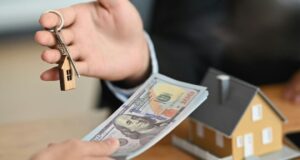A snapshot of recovery a decade after the unprecedented natural disaster
WASHINGTON – August 19, 2015 – (RealEstateRama) — Hurricane Katrina slammed into the Gulf Coast of the United States, forcing more than a million people from their homes and tragically taking more than 1,800 lives. Katrina remains the most devastating and costliest natural disaster in our nation’s history. Today, U.S. Housing and Urban Development (HUD) Secretary Julián Castro and a team of recovery experts briefed reporters on the progress of long-term disaster recovery efforts and the lessons learned over the past decade. ReadHurricane Katrina: By the Numbers.
“The road to recovery has been long and not without serious challenges, but it’s also shown that though the storm was strong, the resilient spirit of the Gulf Coast was even stronger,” Secretary Castro said. “And as long as there are people who want to come home and communities that need to be rebuilt our job is not done.”
Over the last 10 years, HUD investments have had a major impact on the recovery in the Gulf region. Working closely with state disaster recovery leaders in Louisiana, Mississippi, Texas, Alabama and Florida, HUD’s allocated nearly $20 billion through the Community Development Block Grant Disaster Recovery (CDBG-DR) Program. This funding greatly contributed to long-term recovery of the region’s housing stock, economy, and infrastructure.
Housing: More than $14 billion in HUD recovery funds supported State-run housing programs:
- 158,000 households received direct compensation for their economic loss
- 2,894 families received help to purchase homes
- 12,660 rehabilitated/reconstructed housing units
- 767 newly constructed housing units
- 35,597 affordable rental housing units
Infrastructure: Using CDBG-DR funds, States invested a combined $1.6 Billion to replace/improve streets, utilities, sewer lines, schools, hospitals dikes and dams. For example, the State of Louisiana used HUD investments to construct or rehabilitate:
- 82 new schools
- 11 higher education facilities
- 13 healthcare facilities (including the redevelopment of former Charity, Methodist and VA Hospitals in New Orleans).
- 20 parks and recreational facilities
- 52 water and sewer projects
- 22 fisheries in nine coastal parishes
Economic Development: CDBG –DR funds helped thousands of businesses responsible for creating and retaining thousands of jobs in the Gulf Region. Through a variety of programs, its estimated HUD funds assisted nearly 5,500 businesses, creating 6,500 permanent jobs. This assistance helped to sustain Gulf Coast economies during the more recent economic downturn as well as the Deepwater Horizon oil spill in 2010.
Public Housing in New Orleans: HUD was critical in the redevelopment of damaged public housing throughout the Gulf, most notably New Orleans’ ‘Big Four’ developments (formerly known as C.J. Peete, B.W. Cooper, Lafitte, and St. Bernard). Hurricane Katrina displaced 3,000 families living in those developments. Today, four new attractive, mixed-income developments are a vital part of community life in New Orleans. In fact, the Housing Authority of New Orleans (HANO) is serving significantly more households than before the storm. HANO is housing or providing rental assistance to 20,000 households (compared to 14,000 in 2005).
HUD’s Disaster Housing Assistance Program (DHAP) provided stable housing for tens of thousands of families forced from their homes. HUD partnered with 306 Public Housing Authorities in 49 states to find temporary affordable rental housing for displaced households to allow them sufficient time to return to their own homes. By the time this program ended in 2009, HUD helped house nearly 37,000 families.
Fair Housing: HUD has prioritized fair housing and economic opportunity throughout redevelopment. Working with its Gulf Coast partners employed strong fair housing enforcement and economic opportunity requirements to overcome fair housing and economic barriers in the following ways:
- To ensure HUD-funded redevelopment offers job opportunities for low-income residents
- To challenging discriminatory rental policies that closed the door to families seeking to return to their communities; and
- To help develop housing that can be storm-resilient and accessible for people with physical disabilities












